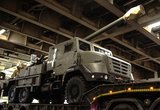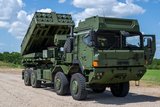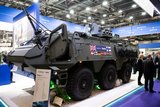Raytheon’s Stinger replacement completes subsystem trials with the US Army
US Army paratroopers fire a FIM-92 Stinger. (Photo: US Army)
RTX Raytheon has announced that its solution to replace the FIM-92 Stinger surface-to-air missile has passed through 10 subsystem demonstrations as part of the US Army Next-Generation Short Range Interceptor (NGSRI) programme.
Conducted over the past few months, the tests accessed multiple features of the company’s system including seeker, flight rocket motor, command launch assembly (CLA) and warhead.
The trials also evaluated tracking, guidance and aerodynamic control capacities, fuzing and safety as well as accuracy and lethality against diverse aerial threats.
According to the supplier, the NGSRI seeker assembly showcased “maximum range acquisition far exceeding Stinger in both laboratory and
Already have an account? Log in
Want to keep reading this article?
More from Land Warfare
-
![Croatia orders Leopards and CAESAR howitzers as Lithuania orders more CAESARs]()
Croatia orders Leopards and CAESAR howitzers as Lithuania orders more CAESARs
The Leopard is becoming the tank of choice in central and eastern Europe as Croatia joins Lithuania, the Czech Republic and Hungary in ordering the platform. Lithuania and Croatia have also signed for CAESAR howitzers.
-
![Light Reconnaissance Strike – enabling a vital mission set (Studio)]()
Light Reconnaissance Strike – enabling a vital mission set (Studio)
A new system-of-systems concept will unlock digital integration of sensors and weapons for Light Forces, allowing them to shape the battlefield environment on their own terms and upgrade legacy platforms.
-
![Lockheed Martin to look further afield for GMARS rocket system opportunities]()
Lockheed Martin to look further afield for GMARS rocket system opportunities
The HX truck is already in use in many NATO and allied countries around the world as a logistics vehicle and carrier for high-value systems, including missile firing weapons, so its use for the Global Mobile Artillery Rocket System makes logistical sense.
-
Medium knocked out of British Army LMP, with CAVS as heavyweight champion
As the British Army seeks to modernise and consolidate its diverse vehicle fleet, yet another change in direction is underway.

























